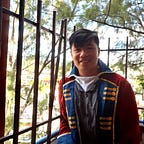A Doodle says it all…
“Research is to see what everybody else has seen, and to think what nobody else has thought.”-Albert Szent-Gyorgyi
In the early times of the pandemic, we were assigned to read a peer-reviewed research journal entitled “Storytelling for Social Change: Leveraging Documentary and Comedy for Public Engagement in Global Poverty” conducted by Chattoo and Feldman (2017) that focuses on the concept that for public participation in world poverty, narrative is important. Stand up Planet has been created to examine the impacts of a little-used nonfiction comedy narrative in a sustainable development documentary. The thesis explores the changes in American public involvement in global poverty following the observation of Stand-up planet compared to a somber documentary, The End Game.
Honestly, when the reading was given to us, I was so unmotivated to start scrolling its pages because I am so overwhelmed with a lot of activities and assignments at that time and that all of us are still new to such set-up of learning. Hence, we are all uncertain about the results of what we are doing. I always end up having a blank note every time I try to open that required journal until I am done already with all the other tasks from other courses and all I have on my plate is this research digest. And so, I have no option but to start reading it and voila! I managed to finish it.
The experience for me was a new encounter. And I want to present it through a doodle. From what you can see, there’s a child at the center and yes, that represents me. I chose a child as the central character because just like one, my curiosity to know the content of the research drove me to analyze its findings further. And just like a child, I always see myself as a person who never stops to ask why events happen the way we see them and I guess it is one of the greatest defining identities a researcher must-have. Above my head are three buildings. I put these three structures symbolizing three foundations that helped me navigate my analysis — grit to go beyond my limitations, grace to see the impossible, and gratitude to see the good even in times of uncertainty. Below me (child character) are four other characters.
To the right, we have here the pencil that draws my analysis on my readings followed by a cloud surrounded by stars representing my desire to make the work as light as possible. Next to it is a pile of books representing the other references I utilized to understand more the topic at hand resulting in a synthesized review of literature and studies regarding multimedia storytelling as represented by a small booklet with the word “Research” imprinted on it. Above the booklet is a unicorn as a reminder that although the work was hard to digest, still, it was a fun activity.
To the left, we have here a pot of flowers showing how I bloomed after getting the gist of the whole research. It made me more critical and analytical on how I will use my gifts as assets in the future to make storytelling a platform to present more accurately the realities around me as experienced by minorities. Next to it was a gift showing how grateful I am to be able to read the journal because it changed so much my perspective about storytelling. It made me realize that in doing narratives, it does not matter what our message is all about. What matters is how we deliver it and how our audience perceives and accepts it. It was followed by a pencil releasing a magical fume representing the power I have with my pen. Now that I have read the journal, I can say that I am ready to use words and visuals to change my world and my people’s world.
And the last character I would like you to see here is the rainbow extending itself on the sun. I put it here as a reminder for myself that as a future storyteller, my role is not only to give my audience content that would entertain them but moreover; provide them content that calls them to action. After all, just like the rainbow, we are united not because we have the same beliefs, tongues, and colors. We are united because we chose to see goodness as a powerful light that can defeat darkness no matter how difficult it is to fulfill.
